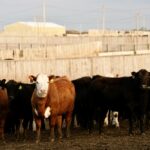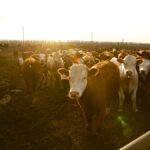MarketsFarm — Canada has already exported more barley through the first two-thirds of the 2020-21 marketing year than in any full crop year in over a decade. That solid export pace is keeping domestic prices well supported, with an increase in seeded area in 2021-22 expected. Export data from the Canadian Grain Commission through March […] Read more

Feed weekly outlook: Solid exports support domestic barley market

StatsCan’s projected canola area on low side of expectations
Wheat acres expected lower, barley up
MarketsFarm — As the market grapples with new planting projections from Statistics Canada, one thing was abundantly clear to MarketsFarm Pro analyst Mike Jubinville: this canola forecast isn’t enough to rectify tight ending stocks. In StatsCan’s survey-based principal field crop areas report, released Tuesday, the federal agency pegged canola acres for 2021-22 at 21.53 million, […] Read more

Klassen: Feeder cattle divorce from futures’ direction
Compared to last week, western Canadian feeder cattle prices were relatively unchanged. Higher-quality yearlings and calves were steady to $4 higher in Alberta and Saskatchewan; in Manitoba, yearlings traded $2-$4 lower while calves were $3-$5 higher. Domestic cattle markets appeared to divorce from feeder and live cattle futures. June live cattle futures finished the week […] Read more

More canola, less wheat expected ahead of StatsCan report
'Returns per acre are just so much stronger'
MarketsFarm — Canadian farmers are seen as likely to plant more canola and barley and less wheat this spring, as market participants await the first survey-based estimates from Statistics Canada on Tuesday to confirm the extent of that shift. “Canola will gain acres and wheat will lose acres,” said MarketsFarm Pro analyst Mike Jubinville, pointing […] Read more

Feed weekly outlook: Prices taper off ahead of report
Feedlots 'not eating as much grain'
MarketsFarm — While prices for feed wheat and feed barley in Western Canada remain substantially higher than one year ago, the past month has seen slight declines. As of Wednesday, high-delivered bids for feed wheat were at least $7.25 per bushel, more than $1.50 higher than last year according to Prairie Ag Hotwire. However, over […] Read more

Slight adjustments in AAFC’s April supply/demand report
MarketsFarm — Updated supply and demand estimates from Agriculture and Agri-Food Canada, released Tuesday, included only minor adjustments to balance sheets for most major crops. Statistics Canada releases its first survey-based acreage estimates for the upcoming growing season on Tuesday next week (April 27), which should lead to adjustments in subsequent supply/demand projections. Canola ending […] Read more

Klassen: Feeder cattle markets experience volatility
Beef prices encourage slaughter pace
Compared to the previous week, western Canadian feeder cattle markets traded $3-$4 on either side of week-ago levels. Prices were quite variable across the Prairies with four main factors influencing buyer sentiment. First, the eastern Prairie regions experienced adverse winter weather. Auction barns in Manitoba and eastern Saskatchewan had smaller volumes on offer. Buyers shied […] Read more

Grain, oilseed exports at strong pace
MarketsFarm — Canadian grain and oilseed exports continue at a strong pace, with movement of canola, wheat and barley all running well ahead of the year-ago pace. Crop-year-to-date exports of Canada’s major grains and oilseeds as of Sunday came in at 37.78 million tonnes, according to Canadian Grain Commission (CGC) data. That’s up by roughly […] Read more

Feed weekly outlook: Prairie grains firm, watching new-crop weather
U.S. corn values supportive
MarketsFarm — Tight barley supplies in Western Canada continue to keep the feed market underpinned, with gains in the U.S. corn market also providing support to grain markets in general. “We’re starting to see a bit of an early weather market in the U.S.,” Allen Pirness of Market Place Commodities in Lethbridge said. Rising corn […] Read more

Opinion: Every producer needs to manage fusarium levels on their own farms
Fusarium testing of last year’s crops found very high levels of infection in many areas
Reading Time: 2 minutes Last year, fusarium was removed from the Alberta Agriculture Pest Act. This was a clear signal from our provincial government that regulating the disease was not an effective way to prevent or even manage it. While a paradigm shift, this was a positive development for our industry. It meant the focus would transition to managing […] Read more

